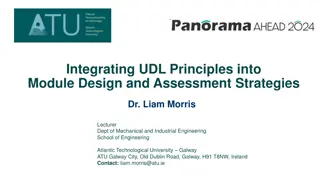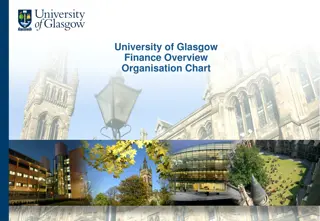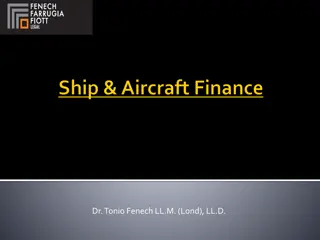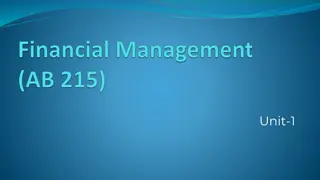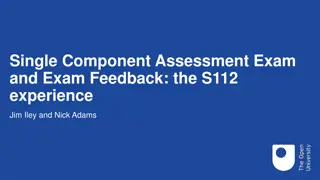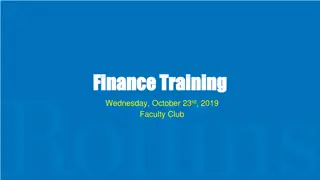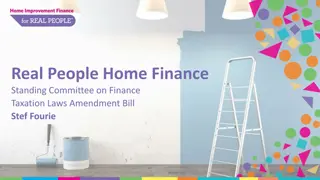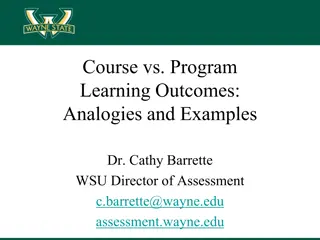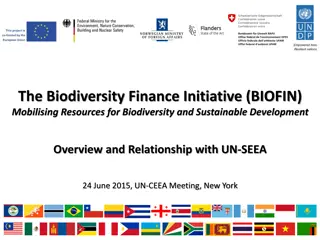
Understanding Outcomes Finance in Impact Investing
Explore the concept of outcomes finance in impact investing, focusing on revenue generation based on positive social outcomes. Learn about the shift towards measuring and funding outcomes rather than outputs, and how this approach can address social issues effectively through collaboration and innovation.
Download Presentation

Please find below an Image/Link to download the presentation.
The content on the website is provided AS IS for your information and personal use only. It may not be sold, licensed, or shared on other websites without obtaining consent from the author. If you encounter any issues during the download, it is possible that the publisher has removed the file from their server.
You are allowed to download the files provided on this website for personal or commercial use, subject to the condition that they are used lawfully. All files are the property of their respective owners.
The content on the website is provided AS IS for your information and personal use only. It may not be sold, licensed, or shared on other websites without obtaining consent from the author.
E N D
Presentation Transcript
1 Introduction to Outcomes Finance Jordan Gildersleeve, MaRS Centre for Impact Investing April 16, 2014
3 Webinar Topics Introduction to Outcomes Finance The Social Impact Bond Model SIB Examples o The Peterborough Case Study (UK) o The Roca Case Study (Mass, US.) Workshop Overview
4 What is outcomes finance?
5 What do we mean by outcomes finance anyway? Revenue for organizations based on the delivery and measurement of positive social outcomes for individuals, families, and communities.
6 This is a fundamental shift This represents a shift away from a revenue model that funds outputs and is driven by cost reimbursement to revenue for organizations on the basis of the positive value of the outcomes they achieve.
7 Examples of outcomes vs. outputs Outputs / activities Outcome Hours of job training services, number of counseling sessions Reduced rate of reoffending Hours of addictions treatment, number of participants in program Reduced instance of homelessness Hours of training, number of potential employers engaged Increased employment Number of social workers, number of families in program Reduced number of children in foster care
8 How can an outcomes focus help address your target social issue? Focus Flexibility Innovation Collaboration
9 How can outcomes and finance be linked? Achieving outcomes can open opportunities for other sources of revenue from results focused funders: Venture philanthropy Pay for success contracts Evidence-based government funding
10 How is this related to Social Impact Bonds? Social Impact Bonds are emerging as one outcomes finance tool to attract private capital to provide bridge finance for early/prevention interventions. It is one model in this larger shift of focusing on outcomes one that has garnered interest of governments, non-profit organizations, and investors around the world.
11 The basic SIB model Source: MaRS Centre for Impact Investing, November 2013, Social Impact Bond Technical Guide for Service Providers .
12 Donor Funding vs. Government Funding vs. Outcomes Finance Donor funding Government funding Outcomes Finance Limited relation to performance / outcomes Limited relation to performance / outcomes Investors paid for achieved outcomes Performance-based payment mechanism Limited Limited High Scalability potential after program successfully executed Short to medium term Medium or long-term Medium to long-term Funding time horizon Yes Yes or No Yes Service providers costs funded upfront Single to few Typically single Few to many Number of delivery partners involved Yes or partial No; activities are prescribed Yes goal is outcome achievement Flexibility in service delivery Requirement to include 3rd party impact validation Not important Not important Important
13 Risks involved with Outcomes Finance Structure Sole focus on program outcomes within term of outcomes finance arrangement (e.g. social impact bond) Measurement Not controlling for externalities Creating perverse incentives Stakeholders Commissioner assessment of value of outcomes may vary Economic benefits may be split across multiple government/private entities Large number of stakeholders leading to agreement challenges on key issues
14 Five characteristics of a suitable intervention 1. Preventive approach 2. Quantifiable outcomes 3. Innovative intervention 4. Track record of success 5. Ability to scale
15 There are a small number of active SIBs globally UK (14) Recidivism At-risk Youth Homeless- ness Children in care Netherlands (1) Youth employment USA (3) Early Child Ed. Recidivism Ex-offender employment Australia (2) Children in care Note: As of Jan, 2014
16 Example I Peterborough Case Study Male prisoners, at least 18 y.o., serving short-term sentences (<365 days), released from HMP Peterborough. 3 cohorts of 1000 men each. Target population Time frame 7 year service period plus data matching and verification. Number of reconviction events for offences committed in the 12 months following release from HMP Peterborough. Measure 10% reduction in number of reconviction events for individual cohort, or 7.5% reduction across the 3 cohorts combined. Target Similar group of short-sentenced male prisoners across the UK the cohort will be matched with up to 10 comparators for each individual. Comparison Pre-release work, through the gate service and 12 months support in the community upon release. Support with accommodation, benefits, health and well being, education, training & employment. Intervention model
17 Example II Roca Case Study: The Partners Context: The Commonwealth of Massachusetts released a Request for Responses (RFR) for juvenile offenders and recidivism The Service Provider The Commissioner The Intermediary The Advisor Source: Third Sector Capital Partners. (April 5th, 2013). Preparing for a Pay for Success Opportunity .
18 Example II Roca Case Study: Scoping & Design Total population of youth aging out of justice system. 6050 Expected Incarcerations (55%) Total population in Geographic Reach 2541 Expected Incarcerations (55%) 11,000 Higher Risk of Reoffending 923 Expected Incarcerations (60%) Participants to be served 700 Expected Incarcerations (60%) 4620 Successful Completion 0 Incarcerations 525 1538 58 58 Incarceration Expulsions 1166 Ineligible & Dismissed (Attrition) 262 Actual Incarcerations (45%) 583 Source: Third Sector Capital Partners. (April 5th, 2013). Preparing for a Pay for Success Opportunity .
19 Example II Roca Case Study: Expected outcomes For the population benefitting from the program, expecting a reduction from 540 incarcerations to 180 Social Financial Potential public savings of between $9.4 - $23.4 million over the six- year project based on historical costs and performance outcomes Source: Third Sector Capital Partners. (April 5th, 2013). Preparing for a Pay for Success Opportunity .
20 Setting up success: Important capabilities Culture and systems for using measurement approaches to evaluate preventive program performance 1 Multi-year track record of success in setting and achieving challenging outcome metric targets 2 Business models and executives with collaborative service delivery capacity and experience 3 Institutional capacity to support scaling up and time horizon requirements of multi-year contract 4 Multi-year planning, budgeting and execution expertise to manage upfront capital 5 Board support for new business model capacity demands, resource commitment and risks 6
21 Innoweave Outcomes Finance Workshop 1. Develop an understanding of what outcomes-based financing means for your community organization 2. Explore some key questions for your organization, including: What positive outcomes are we generating? How will we measure these outcomes? What are the reduced societal costs (or value of societal benefits) associated with these outcomes? 3. Assess readiness for outcomes financing, including identification of delivery and tracking capabilities, expertise, and partnerships 4. Set out next steps in developing an outcomes finance strategy
22 Innoweave Outcomes Finance Workshop details Who: Organizational teams of 3-4 When: May 28th, 2014 from 8:30am - 4:30pm Where: MaRS Discovery District, 101 College Street, Toronto, ON Deadline: Applications are due April 25th, 2014. Space is limited. Successful applicants will be notified by May 1st, 2014.
23 Next steps Identify potential outcome-based programs Complete brief self assessment on Innoweave.ca Apply to attend the workshop by April 25th Visit Innoweave.ca/en/workshops/upcoming- workshops Email info@innoweave.ca
24 Staying in touch Jordan Gildersleeve, MaRS Centre for Impact Investing e: jgildersleeve@marsdd.com t: 1.647.299.3645 w: impactinvesting.marsdd.com
25 Thank You Innoweave.ca info@innoweave.ca









